Imagine sitting across from a client, confidently explaining how your SEO efforts have boosted their bottom line. This scenario becomes reality with a solid SEO tracking plan. As agency owners, we face unique challenges: delivering results, adapting to algorithm changes, and managing client expectations.
This guide will help you create an SEO tracking plan that not only measures success but also speaks directly to your clients’ business goals.
The Importance of SEO Tracking for Your Agency
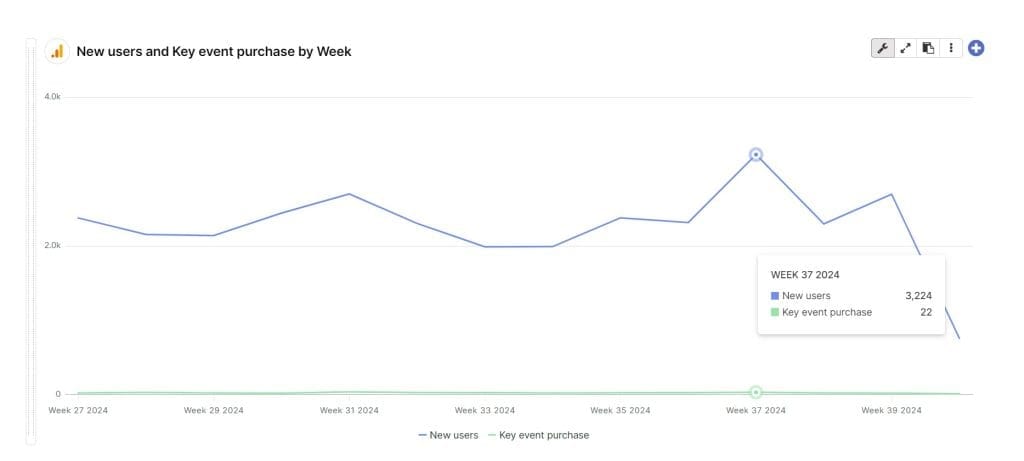
“Trust me, it’s working” just doesn’t cut it anymore.. Clients demand concrete evidence of their investment’s return. A comprehensive SEO tracking plan serves as the foundation for your agency’s survival and growth.
Consider a common scenario:
You’ve optimized a client’s site for months. Traffic has increased, but the client questions the ROI. Without robust tracking, you’ll struggle to justify your work. However, with a solid plan, you’ll walk into meetings prepared to demonstrate how your efforts directly impact their business.
Deep ROI insights don’t come from sporadic keyword checks, they stem from a systematic approach covering all aspects of SEO performance.
Your goal: create a success narrative that aligns with your client’s objectives.


Overlooking effective tracking can lead to several pitfalls:
- Missed market trends, allowing competitors to gain an edge.
- Wasted resources on ineffective strategies, neglecting high-potential areas.
- Client loss to agencies that quantify their value with data.
- Stunted agency growth due to inability to demonstrate success.
SEO expertise extends beyond website optimization. It involves proving your work’s value in terms relevant to your clients’ business. Your tracking plan bridges the gap between SEO knowledge and client goals.
What is SEO Tracking?
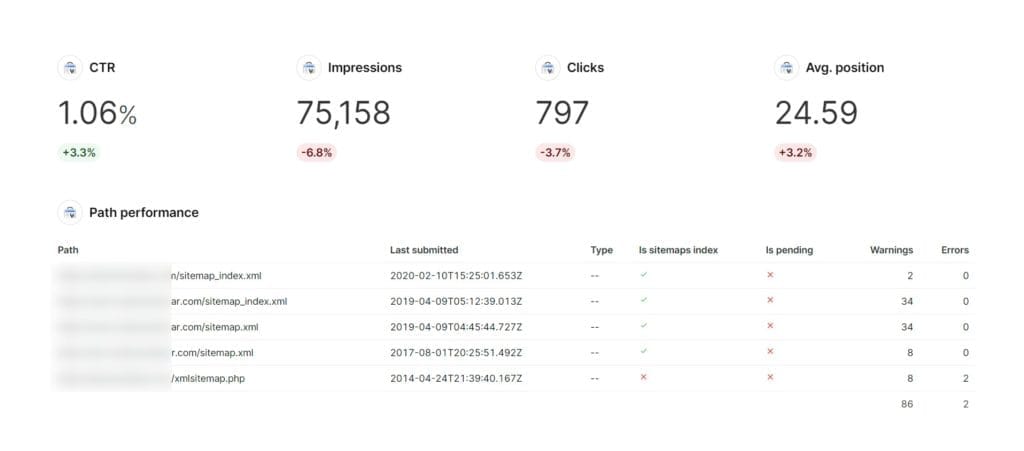
SEO tracking provides a comprehensive view of how your SEO efforts impact a business. Visualize it as mapping your SEO landscape, revealing ranking peaks, opportunity valleys, and paths to improved performance.
At its core, SEO tracking illustrates how your strategies perform across the board. It creates a feedback loop guiding every decision, from content creation to technical fixes. Without this loop, you operate on guesswork rather than solid data.
This approach proves especially crucial for agencies. Clients entrust you with their online presence, which is often a significant part of their marketing strategy. They need assurance their investment is sound, which means that you should demonstrate tangible results.
An effective SEO tracking system allows you to:
- Identify effective and ineffective strategies quickly.
- Understand traffic sources and user engagement patterns.
- Measure progress toward conversion goals, linking SEO efforts directly to revenue.
- Create a roadmap for continuous improvement based on current performance.
These insights transform SEO from a technical process into a strategic business tool. You evolve from a service provider into a growth partner for your clients.
Strategic Benefits of Comprehensive SEO Tracking
| Benefit | Description | Agency Impact |
|---|---|---|
| Early Trend Identification | Spot rising keywords or topics before they peak | Positions you as proactive and forward-thinking |
| Efficient Resource Allocation | Focus on proven strategies | Improves ROI and client satisfaction |
| Clear Value Demonstration | Use data to show business impact | Enhances client retention and upselling opportunities |
| Agile Strategy Adjustment | Respond swiftly to algorithm or market changes | Maintains performance in shifting conditions |
| Accurate Performance Forecasting | Set realistic expectations based on historical data | Builds trust and manages client expectations effectively |
These benefits elevate your entire agency’s value proposition, offering insights and direction beyond typical competitor offerings.
How to Track and Create Your SEO Tracking Framework
Practical implementation comes next. Setting up a tracking framework might seem daunting, especially with multiple clients and diverse needs. However, investing time in this process will yield significant returns.
1. Implement Core Analytics Tools
Start with Google Analytics 4 (GA4) and Google Search Console (GSC). Maximize their potential beyond basic setup.
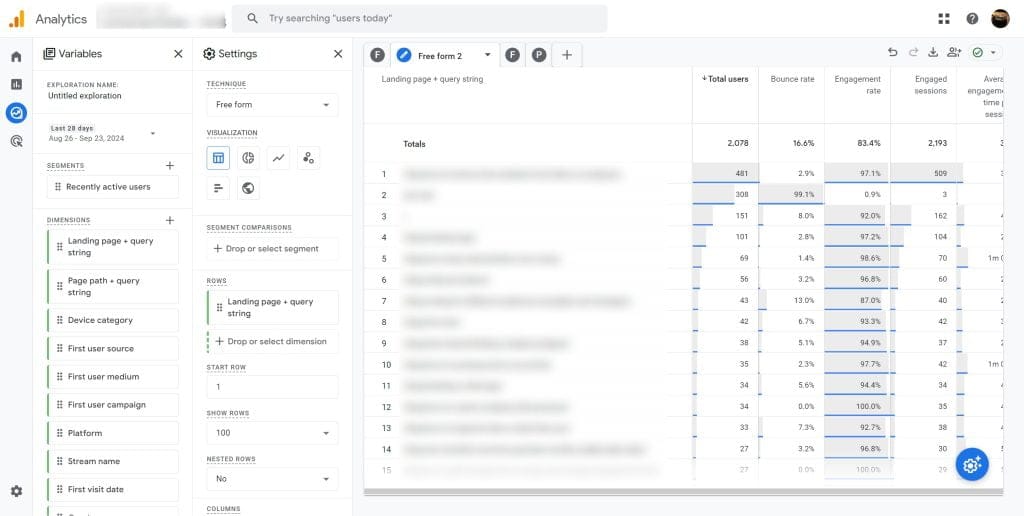
For GA4:
- Configure custom events aligned with client business goals. For e-commerce, track add-to-cart actions. B2B clients benefit from monitoring whitepaper downloads or demo requests.
- Develop audience segments to analyze organic traffic behavior patterns.
- Use the GA4s exploration feature to craft reports addressing client-specific KPIs. Standard reports often miss crucial aspects of your SEO efforts.
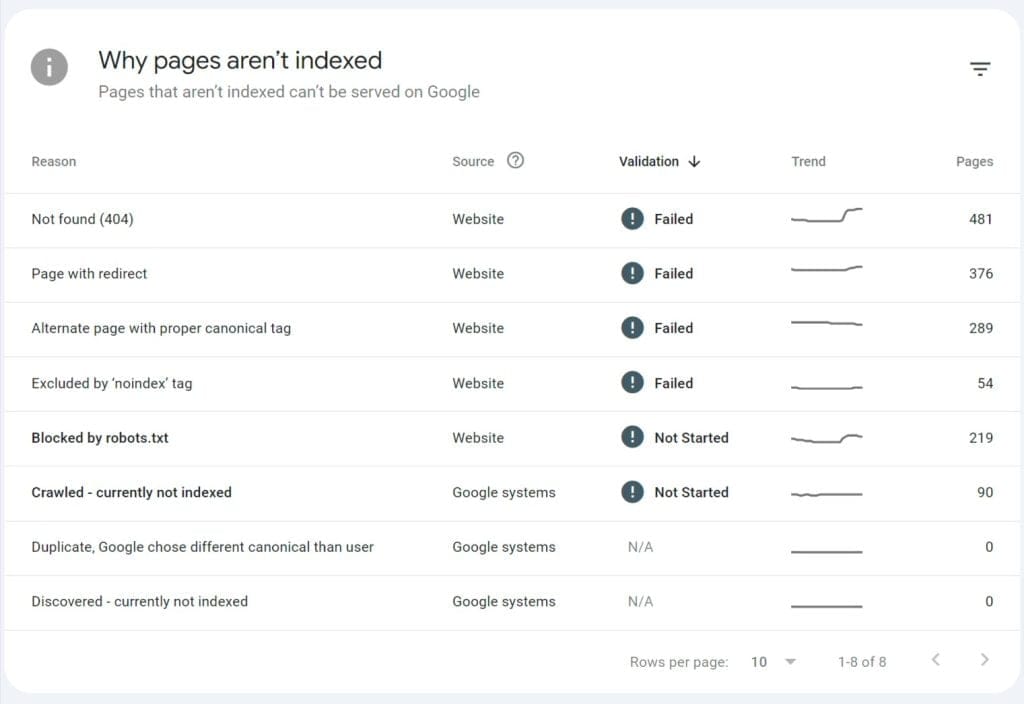
Optimize GSC use:
- Verify site ownership and submit comprehensive sitemaps. This action provides Google with the most up-to-date view of your client’s site structure.
- Create email alerts under “Users Settings” in GSC for critical issues such as manual actions or significant click decreases. This proactive approach allows problem-solving before issues escalate.
- Integrate GSC with GA4 for a holistic view of user discovery and interaction with your client’s site.
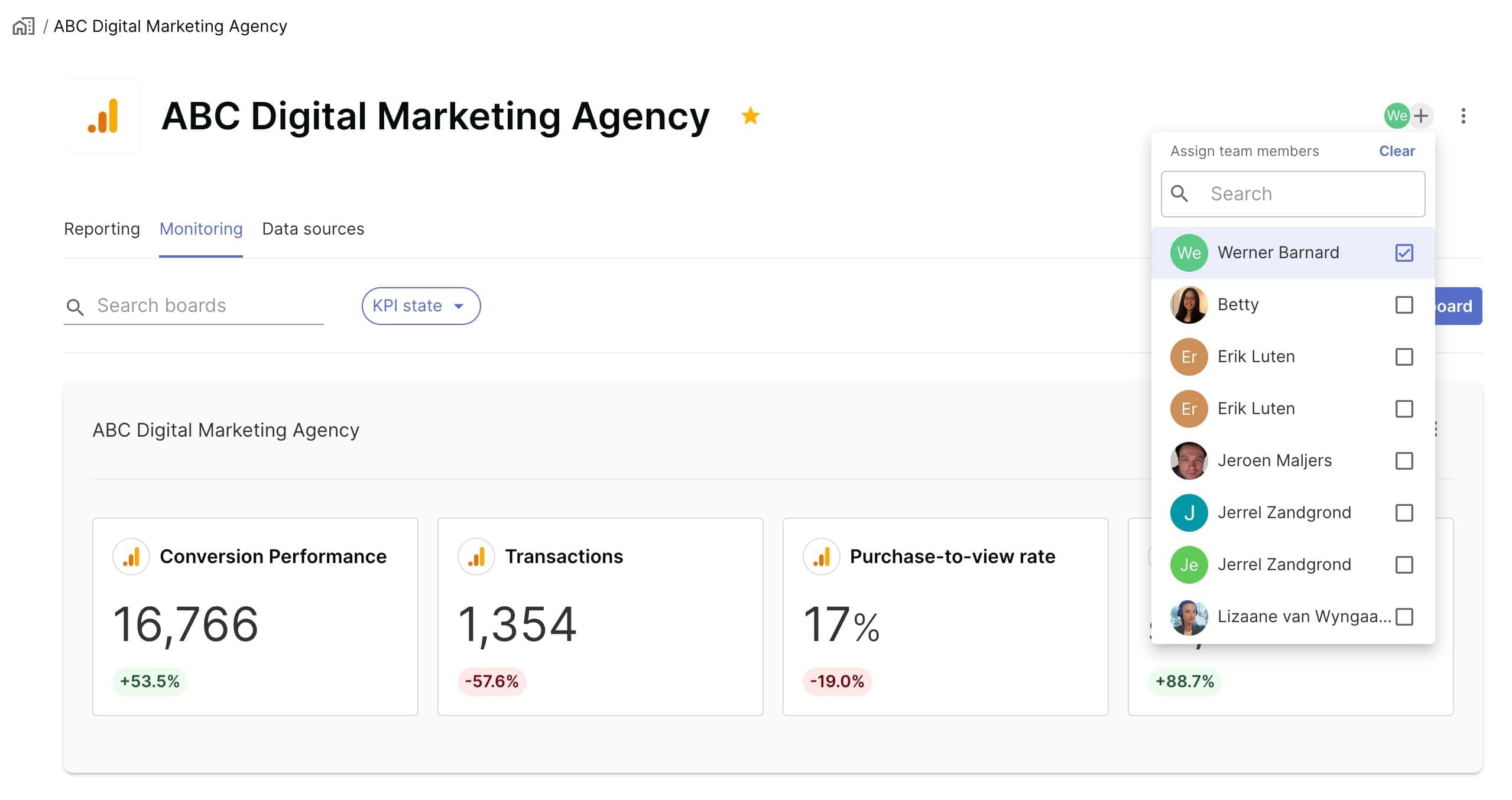
2. Establish Custom KPIs
Avoid the common pitfall of relying on generic SEO metrics that fail to resonate with client business objectives. Remember, clients prioritize bottom-line results over technical SEO jargon.
Your task: connect SEO performance to tangible business outcomes. Tailor KPIs to each client’s specific goals and industry.
Examples include:
- E-commerce clients: Focus on organic revenue, average order value from organic traffic, and landing page conversion rates.
- B2B service providers: Emphasize lead quality metrics, such as organic visitor time on site and form completion rates.
- Content-driven sites: Prioritize engagement metrics like pages per session, average session duration, and return visitor rates.
Initiate discussions with clients about their business objectives, then craft KPIs demonstrating how your SEO work supports these goals.
3. Develop a Comprehensive Baseline
Prior to implementing new SEO strategies, capture a detailed performance snapshot. This process involves more than noting a few metrics; it requires creating a complete picture of your client’s SEO status.
Include in your baseline:
- Thorough analysis of current keyword rankings, encompassing long-tail variations.
- Audit of on-page SEO elements for key pages, examining title tags, meta descriptions, header structure, and content quality.
- Current backlink profile overview, including quantity, quality, and diversity of linking domains.
- Performance metrics such as page load speeds and Core Web Vitals scores.
- Content inventory detailing word counts, target keywords, and current organic performance for crucial pages.
This comprehensive baseline serves dual purposes.
First, it provides context for future efforts, enabling accurate measurement of your SEO strategy impacts.
Second, it serves as a powerful narrative tool, allowing you to illustrate client progress from a defined starting point.
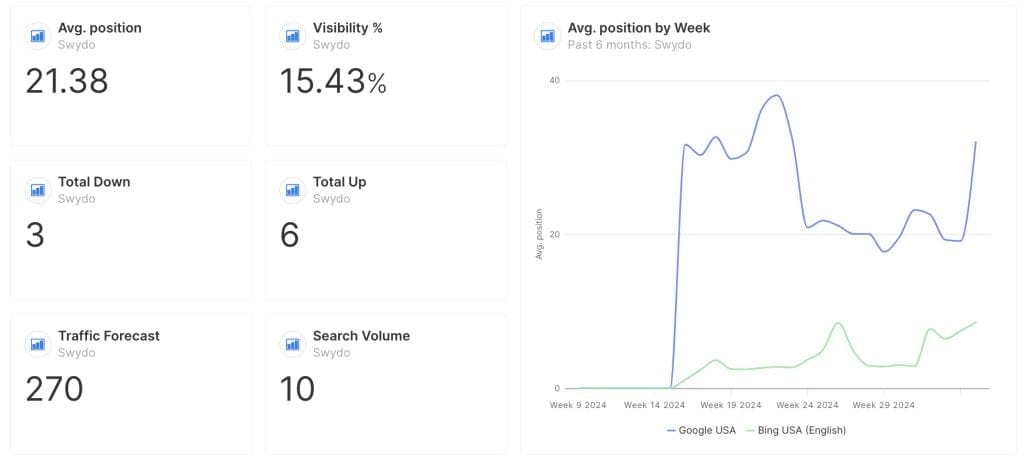
4. Establish a Strategic Tracking Schedule
Consistency proves crucial in SEO tracking. Create a regular schedule for data review and analysis.
Different metrics require varying review frequencies.
Effective framework example:
- Weekly: Conduct swift checks on critical metrics like organic traffic and conversions. This practice helps identify sudden changes or issues requiring immediate attention.
- Bi-weekly: Examine keyword rankings and new backlinks. This frequency balances staying current without getting mired in short-term fluctuations.
- Monthly: Perform comprehensive analyses for client reporting. Dive deep into all KPIs and prepare detailed reports for clients.
- Quarterly: Execute big-picture reviews of strategy effectiveness and long-term trends. Use this time to assess overall direction and make strategic adjustments.
Implement automation where possible. Set up automated reports and alerts to maintain consistency and save time. This approach frees you to focus on analysis and strategy rather than data collection.

5. Use Specialized SEO Tools
While GA4 and GSC form your foundation, specialized SEO tools offer deeper insights and streamline workflows. Swydo’s extensive integration capabilities allow you to connect these tools directly into your reporting framework, saving time and providing more comprehensive insights.
Key Swydo integrations for SEO tracking include:
- Google Analytics 4 and Google Search Console: Combine these core tools’ data for a holistic view of your SEO performance.
- Semrush: Access competitive research and keyword strategy insights directly in your Swydo reports.
- SE Ranking: Track keyword ranking performance over time, integrating this crucial data into your overall SEO reporting.
- AccuRanker: Another powerful option for detailed keyword ranking analysis, allowing you to showcase ranking improvements effectively.
- Google Pagespeed: Incorporate page speed metrics into your SEO reports, demonstrating technical optimization efforts.
- Google My Business: Essential for local SEO tracking, bringing location-based performance data into your reports.
- Shopify: For e-commerce clients, integrate sales data to directly correlate SEO efforts with revenue.
Here are the metrics based on what your clients use:
| Tool | Key Metrics | |
|---|---|---|
| Google Analytics 4 (GA4) |
| Reports > Acquisition > Traffic Acquisition (filter by Organic Search) Filter traffic by Organic Search, set up conversion events, use Explore for custom reports |
| Google Search Console (GSC) |
| Performance > Search Results Filter by queries/pages, compare date ranges, check Coverage report regularly |
| Semrush |
| Domain Analytics > Overview Set up Position Tracking, conduct backlink audits, use Keyword Gap for opportunities |
| SE Ranking |
| Keyword Rankings Create project for each client, configure Keyword Rankings tool, use SERP Features report |
| AccuRanker |
| Dashboard Import target keywords, use Keyword Tags, monitor Share of Voice |
| Google PageSpeed Insights |
| Enter URL into Google PageSpeed Insights for mobile and desktop results Test key landing pages regularly, compare mobile and desktop scores, focus on Core Web Vitals |
| Google My Business |
| Insights tab in Google My Business dashboard Monitor weekly changes, track review velocity, update business info regularly |
| Shopify (for e-commerce) |
| Analytics > Reports > Sales by traffic source Filter for Organic Search, combine with GA4 data, track individual product pages |
Additional integrations that can enhance your SEO reporting:
- Google Ads: Show how organic and paid search efforts complement each other.
- Social media platforms (Facebook, Instagram, LinkedIn, TikTok): Demonstrate how social signals impact SEO performance.
- CallRail and CallTrackingMetrics: Link phone call leads to SEO efforts for a complete conversion picture.
Swydo’s integration ecosystem allows you to build a comprehensive SEO tracking and reporting toolkit tailored to your agency’s needs and client goals. This approach enables you to create insightful, data-rich reports without excessive time spent on manual data collection and collation.
What Key Metrics to Measure for Comprehensive SEO Tracking
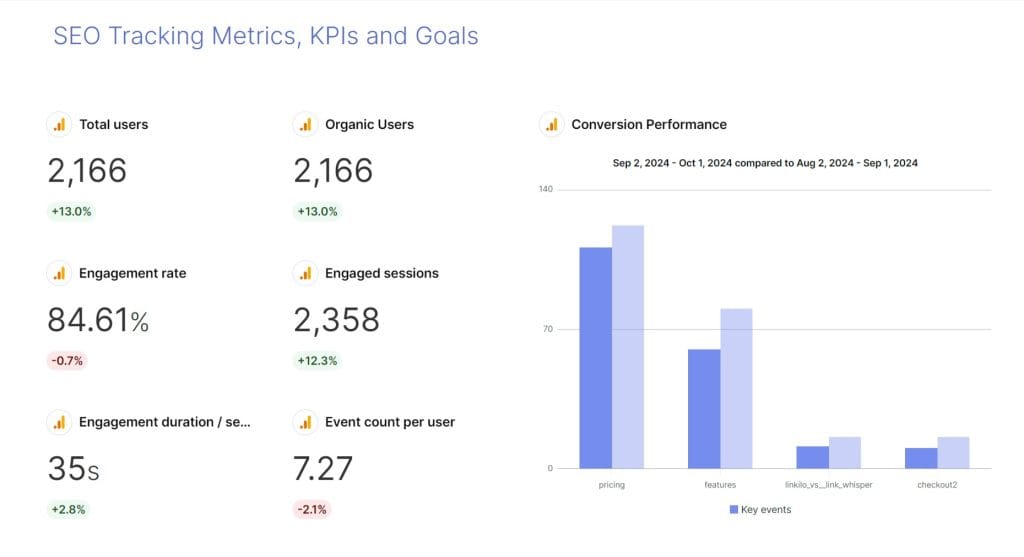
With your tracking framework in place, focus on metrics that provide the most valuable insights for each client’s unique situation.
We’ve compiled a comprehensive table that summarizes the most important SEO metrics to track. This table doesn’t just list metrics; it provides a roadmap for turning data into tangible results for your clients.
Each metric ties directly to business outcomes—no fluff, no vanity metrics.
Here’s a quick reference guide to the key SEO metrics you should be tracking, why they matter, and how Swydo’s integrations can help you measure and report on them effectively:
| Metric | Importance | What to Look For | Swydo Integration |
|---|---|---|---|
| 1. Organic Traffic | Core indicator of SEO success | • Page-level performance • Traffic sources • User behavior • Long-term growth trends | Google Analytics 4 integration for detailed traffic analysis |
| 2. Conversion Rate from Organic Traffic | Links SEO to business outcomes | • Overall conversion rate • Segmented rates by page/source • Comparison with other channels | Custom metrics for organic conversion rate and SEO ROI |
| 3. Keyword Rankings | Indicates visibility in search results | • Mix of short and long-tail keywords • SERP features presence • Ranking trends over time | SE Ranking or Semrush integration for rank tracking |
| 4. Page Load Speed | Affects user experience and rankings | • Core Web Vitals (LCP, INP, CLS) • Mobile vs. desktop performance • Page-specific speed issues | Google PageSpeed Insights integration |
| 5. Organic Click-Through Rate (CTR) | Measures SERP listing effectiveness | • CTR by query and page • Impact of rich snippets • CTR trends over time | Google Search Console integration |
| 6. Backlink Quality and Quantity | Indicates domain authority and trust | • Link quality and relevance • Link acquisition rate • Anchor text distribution | Semrush integration for backlink analysis |
| 7. Domain Authority | Overall site SEO health | • Long-term DA/DR trends • Comparison with competitors | Semrush integration for domain strength metrics |
| 8. Mobile Traffic Percentage | Critical for mobile-first indexing | • Mobile vs. desktop traffic trends • Mobile-specific engagement metrics | Google Analytics 4 for device breakdowns |
| 9. Engagement Metrics | Replaces traditional bounce rate | • Engaged sessions • Average engagement time • Events per session | Google Analytics 4 for advanced engagement metrics |
| 10. Return on Investment (ROI) | Proves SEO value to clients | • Revenue from organic search • Cost of SEO services • Long-term ROI trends | Custom ROI calculations using Swydo’s reporting tools |
Use it as a starting point, then customize your tracking based on each client’s specific needs.
You don’t need to track everything under the sun. Focus on the metrics that align with your clients’ goals. This summary provides a solid foundation, but don’t hesitate to adapt it as needed. Depending on your clients, you might also want to keep an eye on:
- Brand visibility scores
- Local SEO performance
- Content engagement stats
- E-commerce metrics like revenue per visit
- Voice search optimization data
Common Agency Challenges in SEO Tracking and How to Overcome Them
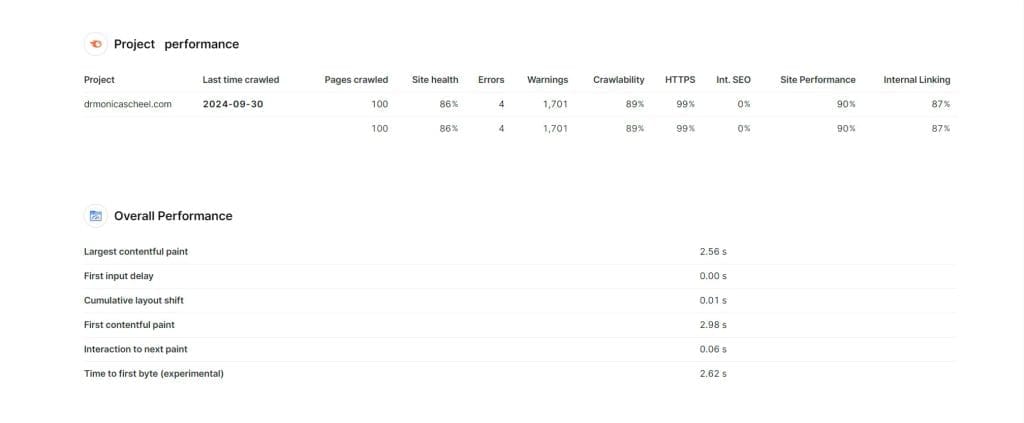
Even with robust systems, agencies often face hurdles in measuring SEO success. Here are common tracking challenges and practical solutions:
Data Overload and Analysis Paralysis
The sheer volume of available data can overwhelm even seasoned professionals, hindering the extraction of actionable insights. To combat this, start by prioritizing your metrics.
Solutions:
- Prioritize 5-7 KPIs tied to client business goals. Treat other metrics as secondary.
- Automate data collection and initial analysis. Use tools like Swydo to flag significant changes or anomalies.
- Create a structured analysis process. Use templates to guide consistent data analysis and streamline the process.
- Train your team to identify meaningful data patterns quickly using industry specific benchmarks. Distinguish signal from noise in data-rich environments.
Attributing SEO Value in a Multi-Channel World
Complex customer journeys spanning multiple touchpoints complicate SEO value attribution.
Solutions:
- Use multi-touch attribution models in Google Analytics to show SEO’s role in conversions.
- Track assisted conversions to show organic search’s role throughout the customer journey.
- Conduct incrementality testing. Adjust SEO efforts in controlled experiments to isolate their impact.
- Monitor long-term metrics like brand awareness and customer lifetime value alongside conversion data.
Tracking Technical SEO Impact
Measuring the impact of technical SEO changes can be challenging.
Solutions:
- Use crawl data to track improvements in site structure and indexation.
- Monitor Core Web Vitals and page speed metrics before and after technical changes.
- Track changes in organic click-through rates to assess the impact of schema markup implementation.
- Set up regular log file exports from the client’s server and use tools like Semrush Log File Analyzer.
- Track metrics like crawl frequency, crawl budget distribution, and crawled vs. indexed ratio.
Managing Long-Term SEO Tracking
SEO’s gradual nature can make it challenging to track progress consistently over time. Here’s how to maintain a clear view of your long-term performance:
Establish Clear Baselines
Before starting any new campaigns, document current performance across all key metrics. Use tools like Semrush or SE Ranking to capture a comprehensive view of the current situation. Create a baseline report in Swydo to serve as a reference point for future comparisons.
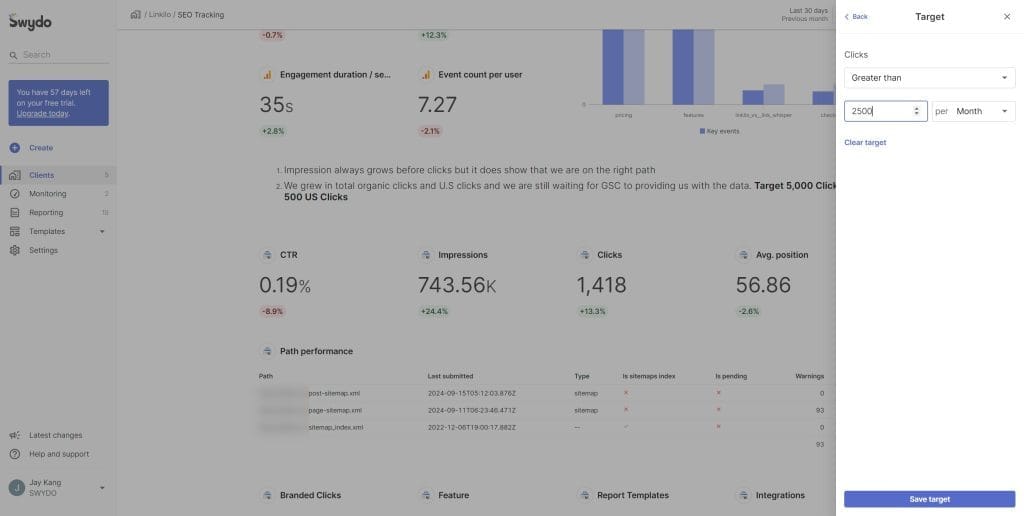
Balance Leading and Lagging Indicators
Track both leading indicators (like keyword rankings and backlink acquisition rate) and lagging indicators (such as organic traffic and conversions). Create a custom dashboard in Swydo that displays both types of indicators side-by-side, providing a holistic view of performance.
Implement Forecasting
Use historical data to create trend lines and implement basic SEO forecasting models. Set realistic milestones based on these projections and industry benchmarks. This approach helps manage client expectations and provides a roadmap for your SEO efforts.
Successful SEO tracking goes beyond data collection – it involves interpreting insights within the context of client goals and continually refining your approach.s within the context of client goals and driving continuous improvement.
Key Takeaways
- Focus on metrics that directly impact client revenue and goals.
- Use data to show how SEO work affects the bottom line. Clear reporting builds trust and justifies your services.
- Combine various metrics for a comprehensive view of SEO performance.
- Tailor tracking and reporting to each client’s unique needs.
- Use client reporting tool like Swydo to streamline tracking and reporting processes.
- Help clients understand SEO concepts and long-term strategy value.
- Continuously refine tracking methods to stay ahead of industry changes.
Effective SEO tracking turns data into actionable insights, driving real business results. Your skill in measuring and communicating SEO success is your competitive edge. Master this, and you’ll position your agency as an essential partner in your clients’ digital growth.
